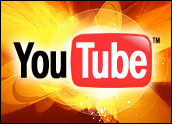
In a move that could have repercussions for all forms of social networking, especially online user-generated video, YouTube intends to begin sharing its advertising revenue with users who contribute videos.
YouTube co-founder Chad Hurley disclosed the plans during the World Economic Forum in Davos, Switzerland. Hurley indicated that how the system will work is still being developed, but said the site has grown to a point where it can explore such an option.
“We are getting an audience large enough where we have an opportunity to support creativity, to foster creativity through sharing revenue with our users,” Hurley told the audience. “We feel we are at a scale now that we will be able to do that and still have a true community around video.”
The ad-sharing scenario likely means that YouTube wants to begin inserting ads directly into user-made videos, something that many observers said was all but inevitable when Google purchased YouTube last fall.
Media 2.0
Hurley spoke in Davos as part of a panel on so-called Web 2.0 innovations, along with Microsoft Chairman Bill Gates and Catrerina Fake, the founder of photo-sharing site Flickr, which is now also owned by Google.
Hurley said that when YouTube was founded, its developers worried that offering revenue sharing from the outset would alter the network by creating a group of people motivated by money rather than a desire to share their video creations.
Currently, however, there are other considerations in play, including the need to keep the quality of content at the site high enough to attract more visitors and keep users coming back even after ads begin appearing in videos.
Google and YouTube will likely give users a menu of choices for what ads to choose, according to search engine expert John Battelle. He predicted some ads could be as short as three seconds, and users will also be able to select whether to run the ads at the beginning, middle or end of their video clips.
“Ultimately, the audience will determine, through its attention to videos, whether YouTube succeeds or fails at this new ad gambit,” Battelle said. “After all, producers of high quality video have plenty of options when it comes to hosting content these days — it’s cheap, and it’s easy. No one has to post content to YouTube unless, of course, they want [to make use of] the distribution engine it has become.”
Will YouTube take the next step and require users to include ads in their videos in order to gain access to the site’s massive distribution reach? Battelle said. In recent weeks, Google began integrating YouTube into its video search program, with searches on Google Video returning relevant YouTube videos as a top search result.
Money for Nothing?
Of course, the social media — or Web 2.0 — phenomenon already includes an element of commercialism by those who participate. Blogging became increasingly popular, for instance, after Google and Yahoo began allowing bloggers to join their ad networks, though only the most heavily trafficked sites earn significant revenue from those programs.
Other sites already offer users a cut of advertising proceeds in return for their creative content. Video site Revver offers a cut of its advertising income to both video creators and those who help propagate Revver-hosted videos across the Web via file sharing. Sharers can earn a 20 percent cut of revenue, while the creator and Revver split the remaining portion in half.
Google is likely walking a tightrope with respect to YouTube — it likely wants to demonstrate quickly that the purchase was worthwhile by showing revenue and profit from YouTube, but it also needs to avoid alienating the site’s users by cluttering with ads what has been a pure community site to date, said Forrester Research analyst Charlene Li.
“YouTube is a gem because it figured out what Google, Yahoo and all of the other video players in the marketplace couldn’t — that it’s not about the video. It’s really about the community that’s around the video,” Li said.
























































Social Media
See all Social Media